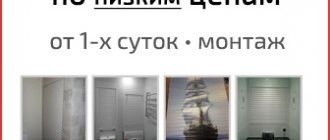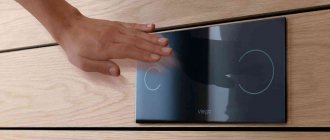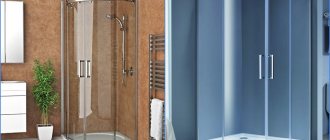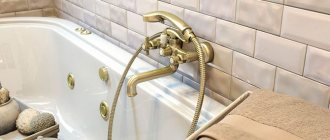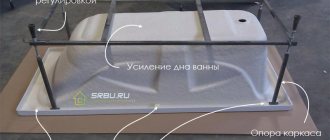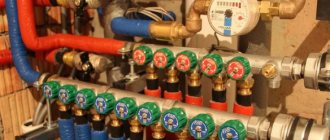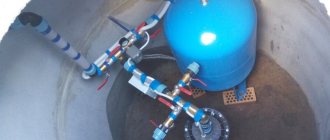Choosing a toilet is not a task for the faint of heart. An inspired person who wants to buy a toilet in a plumbing store or in a huge construction Hypermarket may be faced with the fact that it is completely unclear which toilet is good and which is bad. But a good toilet should have the following qualities:
- Durability of materials (durability of porcelain or earthenware)
- Reliability of fittings and its service life
- Hygiene
- Easy to care for
- Anti-splash system available
- Budgeting
Due to the fact that the search for information on the Internet was not successful, and I received only incompetent answers to the questions asked to the consultants in the store, I decided to help you with choosing a toilet. That’s why I’m telling you how to do it so you don’t regret it or get upset later.
Bowl shapes
Plate-shaped bowl.
- pros
- + no splashes
- -poorly washed with water
- - rust appears over time
- + washes well
- + no splashes
- + no unpleasant odor
Minuses
Visor bowl.
pros
- Minuses
- -No
- + water saving
- + washes well
- + hides unpleasant odors
Funnel-shaped bowl.
pros
- Minuses
- -spray
Rimless toilets. With them you can forget about problems with dirt and bacteria. If there is no rim, then there is no place where dirt could collect and breeding grounds for germs. Even salt deposits do not appear in them. Caring for such a toilet is as easy as shelling pears. To do this, you do not have to use “chemicals”, and when flushing, approximately 30% less water is used.
Let's consider three more important parameters that will protect you from splashes:
Height:
This photo shows that the height of the fall is as small as possible - waste products do not have time to accelerate to a critical speed under the influence of gravitational forces. The Anti-splash system completely eliminates the possibility of splashes.
Trajectory of falling excrement:
Before purchasing the toilet you like, you must carry out measurement manipulations and find out the optimal distance to the “Black Hole”. This picture shows that the smaller it is, the less opportunity there is for splashing. Take the tape measure with you to the store.
Anti-splash system:
You can take a pack of cigarettes with you, not necessarily Parliament. The photo shows that the pack does not reach the water surface by about 3 centimeters. Toilet bowls with a real system have a small hole
,
no more than 10 cm
.
My experiments on measuring safe height:
- By measuring the optimal fall height in a wall-hung toilet, we found that the average number is 17 cm.
- Measuring the distances, we realized that the safe distance from the edge of the toilet ends at 14 cm, but here we should immediately notify that the parameters of the edge of the toilet vary, just like our fifth point. It is better to measure in advance the optimal and “Safe amount” and, armed with specific data, head to the store.
We’ll start with a trip to the plumbing
store “Neptune ”
and inspection of the presented range of toilets. The sellers greeted us warmly and gave their consent to photograph the presented toilets.
model "Caesar Lux" No. 1:
- No visual curvature or irregularities were detected, it looks decent.
- The fastenings of the toilet lid to the toilet are of good quality - made of metal
, the lid is made of high-quality plastic.
- The distance from the edge of the toilet when measuring is 15 cm - which will protect you from unpleasant moments. The photo shows that the bowl has an “Anti-sand” system.
- The height of the fall is 18 cm - which is not bad, plus the trajectory of the fall falls on the porcelain visor.
- The system is the same as toilet No. 2
- it is trustworthy and suitable for use in Russian conditions. The only thing is that in a couple of years it will be necessary to clean and adjust the fill valve, and maybe earlier.
PS We analyzed reviews for this model:
Yes, the toilet does not flop and has a good flushing device. But there are also disadvantages that become apparent after the purchase:
- Porcelain is fragile, the lid breaks easily, when installing you need to be extremely careful to avoid chipping.
- The installation diagram in the instructions is unclear - call a plumber
.
model "Boreal" toilet No. 2:
- A visual inspection revealed no problems - everything was smooth and white.
- The seat is made of duroplast, with metal fastenings.
- The distance from the edge was 16 centimeters. The photo shows that the toilet is equipped with an Anti-splash system.
- The measurements show that the fall height is 17 cm
on the porcelain visor.
- The “Oli” fittings - we talked about it in the first toilet. Reliable.
Types of tanks
The design of the tanks is as follows:
- Compact The tank is attached to the toilet. This is the most popular option due to the fact that anyone can handle the installation of such a tank.
- The corner tank is a special case of the compact.
- Monoblock. The tank and toilet are one unit.
- A built-in tank is used if you need to get rid of annoying noise when draining. The built-in tank is located in the wall, so only the button can be seen from the outside.
- A high-mounted cistern can be mounted very high above the toilet. It connects to them using a fairly long tube. Such tanks are easy to install and also have a very effective drainage system. However, it is quite difficult to find such a tank on open sale.
Release
So, there is a horizontal sewer outlet. The sewage system is drained from the wall. This is the most common issue in city apartments. An example of it is shown in the following photo.
There is also a vertical one . Here the drain is removed from the floor; it is more typical for country cottages and private houses. Its character is clearly visible in the photo.
Application area
The scope of modern toilets is very wide. They are usually found in apartments, country houses, cottages, offices, and commercial premises.
If the toilet is installed near the bedroom, it is important to pay attention to the noise level when filling and draining water.
We must not forget that some models of toilets cannot be installed in a particular residential building. This happens if the type of sewerage installation (in the bathroom) has some peculiarities. In this case, you will have to use a special adapter. You can find it in any large store that sells plumbing fixtures.
Rating of floor-standing toilets by quality 2020 – identifying the leaders
So, which toilet is better to choose for an apartment, so as not to regret your choice later?
Let's look at the quality rating of floor-standing toilets for 2020 and understand which models in different price categories our fellow citizens preferred.
Why will we consider floor-mounted toilets? After all, there are also wall-hung toilets with installation.
Yes, because floor-mounted toilets are the most popular, that is, the most purchased at present. Therefore, we will give them our attention.
Rating of budget toilets
Santeri Prime Standard
Gesso Premium 2
Sanita Standard economy
Roca Debba
Santek Neo Light 1WH302408
Jika Vega
Average cost toilets
Cersanit Kristal KO-KRI011-3/6-DL-w
VitrA Zentrum
Jika Mio 823716000
Sanita luxe Best Color Black
Delice France Melanie Compact
Jacob Delafon Struktura UJX102
Premium toilets
Ideal STANDARD Connect Arc E803601+E785601
Gustavsberg Artik GB114310301231Laguraty 8074A
Jacob Delafon Elite E29723
Sanita Luxe Infinity
Bien Venus VNKD064N1VE0W3000
Installation rules
When figuring out how to connect a toilet to a sewer, you should take into account the generally accepted rules:
- The type of outlet must correspond to the wiring diagram.
- When using additional accessories, adapters and cuffs, you must pay attention to their diameter. It should not be smaller than the diameter of the outlet pipe.
- The outlet pipe must slope towards the sewer pipe. Fasteners must be installed on every meter of pipeline.
- Any joints are covered with sealant. Otherwise, hazardous gases and wastewater may enter the room.
- When installing the exhaust system, sharp bends should not be allowed, because this increases the risk of blockages. 2 turns of 45° are allowed.
- When making calculations, you should draw up a detailed drawing of the entire wiring.
Installing a toilet using corrugation
The corrugation is a flexible plastic outlet, which is intended for high-quality plumbing work. Its cost is relatively low, but when choosing, it is better not to save money, but to give preference to expensive models.
When installing the corrugation for the first time, you should determine the place where it will be installed on a permanent basis. If the equipment is new, no preliminary preparation is required. When replacing an outlet on old plumbing, you should thoroughly clean it of any remaining sealant or cement. Any blockage compromises the insulation of the joints.
Dimensions
The dimensional parameters of sanitary ceramic products are given in GOST 30493-96, according to which for solid-cast toilets:
- height H of the bowl from the floor level 370 and 400 mm;
- width B 340 and 360 mm;
- length L is at least 605 mm; by agreement with the customer, it is possible to manufacture toilets with a length of 575 mm. For products with an attached shelf, the permissible length is 460 mm.
- outer diameter of the outlet - 102 ± 5 mm.
The following sizes are accepted for children's toilets:
- height 335 mm;
- length 405 mm;
- bowl width 290 mm.
It is worth noting that basically all manufacturers adhere to the dimensional parameters specified by state standards, while the total length of the products, including the attached tank, averages 625 mm.
Bowl sizes according to GOST 30493-96
Determining the purchase budget
The cost of a toilet varies depending on its type, the type of bowl, the material from which it is made, some specific parts in a particular design, but the tendency is that the total cost of plumbing is determined depending on the country of the manufacturer. For example, a ceramic toilet will cost differently in different countries. Pricing is influenced by customs duties, the technological and raw material resources of a particular country and, of course, the quality of the product.
Conventionally, the toilets on sale can be divided into three price classes:
- A budget option;
- Mid-price segment plumbing;
- Expensive luxury plumbing fixtures.
A budget option
Almost 80% of domestic products produced on an industrial scale can be classified as budget toilets. It cannot be said unequivocally that all Russian-made toilets are of low quality. No, the low cost is mainly due to the absence of duties and transportation costs. In general, the quality of domestic products is quite tolerable, and if we are talking about a foreign company that has a production branch in our country, then in this case, it is sometimes possible to buy a toilet of very good quality almost at our Russian prices.
Also quite often, toilets made in China are classified as budget plumbing fixtures. These guys like to make products of average quality, but they don’t raise the price too much. If we are talking about installing a toilet in an office, medical or educational institution, then buying budget plumbing will be the best option.
Mid-price plumbing
Plumbing fixtures in the mid-price segment are represented on the Russian market mainly by manufacturers from countries such as Finland, the Czech Republic or Poland. A very small share of toilets at average market prices is imported from Turkey and Spain. As a rule, the cost of toilets imported from these countries varies between 150-250 US dollars. However, among Spanish products you can sometimes find toilet models whose price can exceed $400.
Expensive luxury plumbing fixtures
Toilets, which can rightfully be called elite luxury plumbing fixtures, are imported into our country mainly from Germany, Austria and Sweden. These countries have long established themselves as producers of high-quality plumbing fixtures. On average, the price of a toilet, for example, from Germany ranges from $300-550. Of course, a lot still depends on which toilet company you choose, because, as you know, there are differences between companies.
Structural types of toilets
Manufacturers of plumbing products are constantly improving their products, which is the reason for the wide variety of toilet models. The following toilet designs available on the modern market can be noted:
- compact;
- monoblock;
- "retro";
- hanging structure;
- combined model.
Compact is the most common answer to the question of how to choose the right toilet for your home. These are relatively inexpensive and truly compact models, easy to install and easy to use. An interesting compact option is a corner model of this type, which will fit perfectly into the interior of a small bathroom.
The compact toilet tank is located next to the toilet bowl on a special shelf and is controlled using a button or lever
Monoblock is an original version of a compact in which the tank and bowl are combined into a single whole. This option has all the advantages of a compact and completely eliminates the possibility of leaks in the area where the bowl connects to the tank. However, any breakdown of the tank or bowl will lead to the need to completely dismantle and replace the entire toilet.
Monoblock toilets are compact and convenient models, however, if any part of such a device breaks down, it will have to be completely replaced
“Retro” models are unique and quite expensive devices in their own way, representing a modern version of a toilet with a high-mounted tank, in which you need to pull a rope or chain to flush. In such toilets, the cisterns usually do not leak or break as often as was the case with their Soviet-style predecessors. But for a small bathroom this model is unacceptable because it takes up too much space.
An excellent model for fans of the old style, the high price of which is explained not only by the uniqueness of the model, but also by high-quality workmanship
The wall-hung toilet breaks all records for compactness. The tank of this model is mounted into the wall, and the toilet bowl is hung on this wall, i.e. externally the structure looks like a toilet bowl mounted on the wall. Nothing extra. There is no toilet foot here, so caring for this model takes a minimum of time and effort.
Wall-hung toilet models take up minimal space and look very stylish, but their installation can be quite complicated
The combined model is a toilet combined with a bidet. The model is convenient and, for obvious reasons, not cheap. It is usually slightly larger in size than a standard toilet, so it is not recommended to choose it for a very cramped toilet room.
An interesting practical experience in choosing a toilet is presented in the following video:
Connection to sewerage
The connection option is determined by the type of release.
Connecting a toilet with an oblique or horizontal flush
An oblique or straight outlet is located at the back of the product. To connect, you need the following tools:
- A sealing collar designed to connect the toilet to the sewer, or corrugation. If the outlet is at the same level directly with the sewer inlet and does not move in any direction, then a rubber cuff will be enough to connect the outlet and the sewer pipe. If the toilet deviates even at a minimum distance from the entrance to the sewer, then the connection is made only through a corrugation;
- You also need a corrugated hose designed to connect the toilet to the sewer system.
- Sealant.
In order to connect plumbing equipment, you must do the following:
- Place the toilet in the designated place and check that the outlet coincides with the sewer outlet. Based on the test performed, it is necessary to select a device that allows for a successful connection. In order to prevent mistakes in further work on connecting the toilet to the sewer, the area for installing plumbing equipment is marked on the floor;
- The cuff or corrugation is treated with a special sealant;
- The toilet is connected to the sewer outlet;
- The toilet is sent to its place. Straight or oblique release is connected to the fixation element. In other words, the corrugation is connected to the outlet;
- The device is secured. The corrugation is installed in the hole of the drainage system.
- The tightness of the connections is carefully checked.
The corrugation used for connection can be replaced with ordinary plastic pipes, which are intended for sewerage. Selection of pipe sizes and bends is carried out on an individual basis.
What material should the toilet be made of?
The material from which the sanitary ware is made is one of the most important points in the difficult task of completing a bathroom. Most often, when deciding which material to choose a toilet from, buyers choose between sanitary ware and porcelain. These are the two most common materials that are used very widely in the manufacture of plumbing fixtures.
They differ mainly in one indicator - porosity, which is higher in sanitary ware. This means that such products absorb dirt better and are therefore more difficult to clean. Porcelain is less porous, more durable and more expensive.
A standard sanitary ware toilet can last about 30-40 years, but the service life of porcelain products can be 60 years. However, plumbing manufacturers are already concerned with developing sanitary ware with reduced porosity, which increases its service life.
Atypical materials include inexpensive stainless steel, pretentious options made of gold or silver, copper or bronze, as well as stone models. Stainless steel products are an inexpensive and relevant choice for public toilets.
A toilet made of artificial stone is an excellent choice for creating an exclusive design in the bathroom. These models are usually made or delivered to special order.
A toilet made of natural stone is rather a work of plumbing art, which is not very convenient to use for its intended purpose. A more practical choice would be a toilet made of artificial stone: it looks almost the same as a natural one, costs less, and is more convenient to use.
The insertion of artificial material under natural stone adds sophistication to the interior, especially if the tone of the insert is matched to the overall color scheme of the bathroom
Models made from non-traditional materials are rarely found on the market; they are usually made to special order.
If it is not possible to purchase a designer toilet model, you can diversify the interior of the bathroom with the help of a beautiful lid or an original sticker on the tank
Water supply
Water is supplied to the drain tank through flexible hoses, usually in aluminum braid. With rare exceptions, the inlet fittings of modern tanks are located under the bottom on the right or left side. In older models of toilets, which are now out of production, lateral water supply into the tank was practiced through a special polymer hose with plastic union nuts (American-type connection).
In addition to supplying water to the tank, bidet-type devices use a hygienic shower, which is connected through a mixing unit for ease of use.
Features and additional options
A toilet has long been not just a “potty” for natural needs, but a completely full-fledged product, which may have more options than another inexpensive car. Let's briefly look at the most common ones in the mini-directory.
Anti-splash. In fact, this is not an option, but rather a set of solutions that will allow you to make “gurgle” without excess water. Not all manufacturers note this feature, but this does not mean that there will be a lot of splashes from the toilet.
Antibacterial coating. According to manufacturers, special coating of the toilet bowl and/or seat will not allow bacteria to grow and multiply. Hygiene is everything.
Rimless toilets. Fundamentally no different from ordinary ones. The bowl simply does not have a rim from under which water flows during flushing. The rim is a difficult area to clean, and its absence will help keep the toilet clean.
Partial drain. It is also called half-mode as well as dual-mode. It is not always necessary to empty the entire tank, and that is why some models can empty only a certain part of it. Also in the characteristics you can find descriptions such as one-, two- or three-mode drainage. Everything is simple with them. Single-mode - drains all the water at once. Dual-mode – can work with half volumes. Three-mode - allows you to stop the drain at the right time. In any case, the function will be useful because it allows you to save water.
Hygienic shower. Using water instead of toilet paper is considered more hygienic. In practice, this means either the presence of a “fountain” in the toilet design, or the presence of a watering can with a hose. Toilets with showers are more expensive than regular ones and more difficult to install. Installing a separate watering can is also sometimes easier.
Drying. After using a hygienic shower, excess water must be removed. This can be done with paper, or with special drying. For obvious reasons, there is no option separate from the shower.
Seat microlift or pneumatic cover. An inexpensive option from the category of “nice little things”, like door closers on door facades. With it, the lid will not fall on the tank with a crash, but will softly and smoothly fall on it without unnecessary noise. In addition to quiet operation, the microlift will ensure that there are no impacts on the lid itself, which has a positive effect on its durability.
Heated seat. The name speaks for itself. If it’s really cold in the toilet and your butt is freezing, it can be useful. To connect the toilet seat you will need an outlet. Another interesting feature is that these seats can be purchased separately.
Backlight. A decorative option with a hint of practicality. Whether it is necessary or not is up to you to decide.
Remote Control. Yes, toilets also have remote controls that control all options like heating or shower.
Automatic raising and lowering of the seat. A fashionable option that will allow you not to touch the seat with your hands. On the one hand, it provides additional hygiene, on the other hand, you still need to wash your hands after visiting the toilet.
Automatic drain. You are probably already familiar with it after visiting public toilets. This function is unlikely to be urgently needed at home, but it is also available just in case.
Colored toilets and models with drawings. They don't happen often, but they do happen. It’s a matter of taste, but you won’t see this in any stylish modern interior. White is the best choice.
Flush
From the cistern, water flows into the bowl in different directions. The most common types of flushing:
Straight
With this type, water from the tank is directed into the bowl through a hole located at the top of its back wall. If waste is washed away in a dish-shaped bowl using this method, its advantage of a splash-free design is offset by the appearance of drops when the flow hits solid masses. The main disadvantage of direct (cascade) drainage is incomplete cleaning of the bowl surface from dirt, as well as high noise.
Straight circular
The peculiarity of this system is the distribution of water flow along the entire perimeter of the rim of the bowl, while it falls vertically down. When flushing, the entire surface of the bowl is cleaned, and the process itself occurs at a low noise level.
Circular twisted
The water flowing out of the tank twists in a spiral and thus completely washes the entire inner surface of the bowl, carefully washing away the waste.
Types of releases
